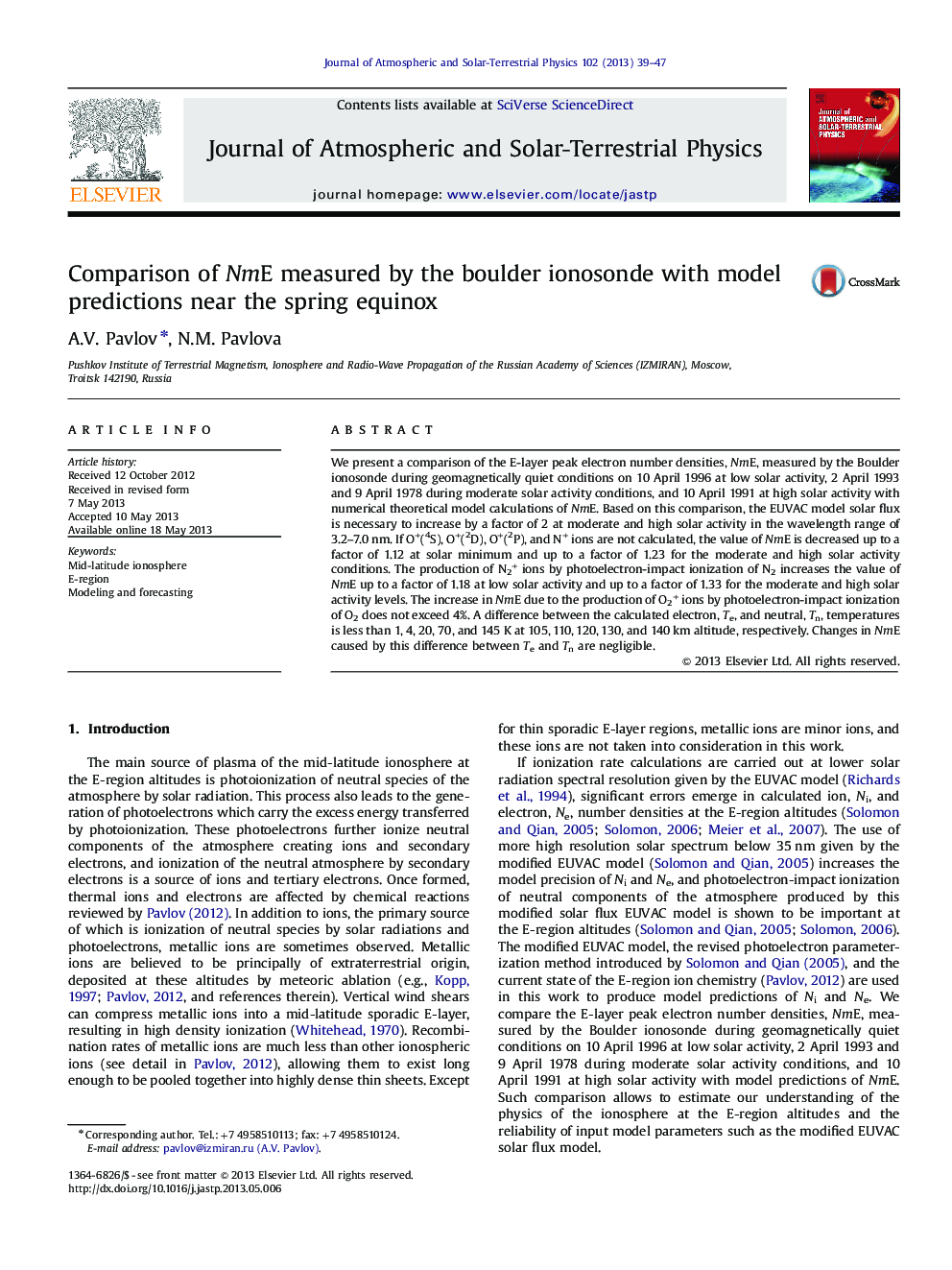| Article ID | Journal | Published Year | Pages | File Type |
|---|---|---|---|---|
| 8140550 | Journal of Atmospheric and Solar-Terrestrial Physics | 2013 | 9 Pages |
Abstract
We present a comparison of the E-layer peak electron number densities, NmE, measured by the Boulder ionosonde during geomagnetically quiet conditions on 10 April 1996 at low solar activity, 2 April 1993 and 9 April 1978 during moderate solar activity conditions, and 10 April 1991 at high solar activity with numerical theoretical model calculations of NmE. Based on this comparison, the EUVAC model solar flux is necessary to increase by a factor of 2 at moderate and high solar activity in the wavelength range of 3.2-7.0Â nm. If O+(4S), O+(2D), O+(2P), and N+ ions are not calculated, the value of NmE is decreased up to a factor of 1.12 at solar minimum and up to a factor of 1.23 for the moderate and high solar activity conditions. The production of N2+ ions by photoelectron-impact ionization of N2 increases the value of NmE up to a factor of 1.18 at low solar activity and up to a factor of 1.33 for the moderate and high solar activity levels. The increase in NmE due to the production of O2+ ions by photoelectron-impact ionization of O2 does not exceed 4%. A difference between the calculated electron, Te, and neutral, Tn, temperatures is less than 1, 4, 20, 70, and 145Â K at 105, 110, 120, 130, and 140Â km altitude, respectively. Changes in NmE caused by this difference between Te and Tn are negligible.
Related Topics
Physical Sciences and Engineering
Earth and Planetary Sciences
Geophysics
Authors
A.V. Pavlov, N.M. Pavlova,
